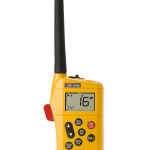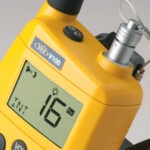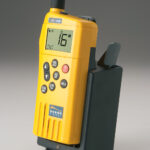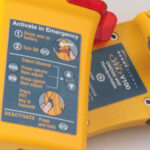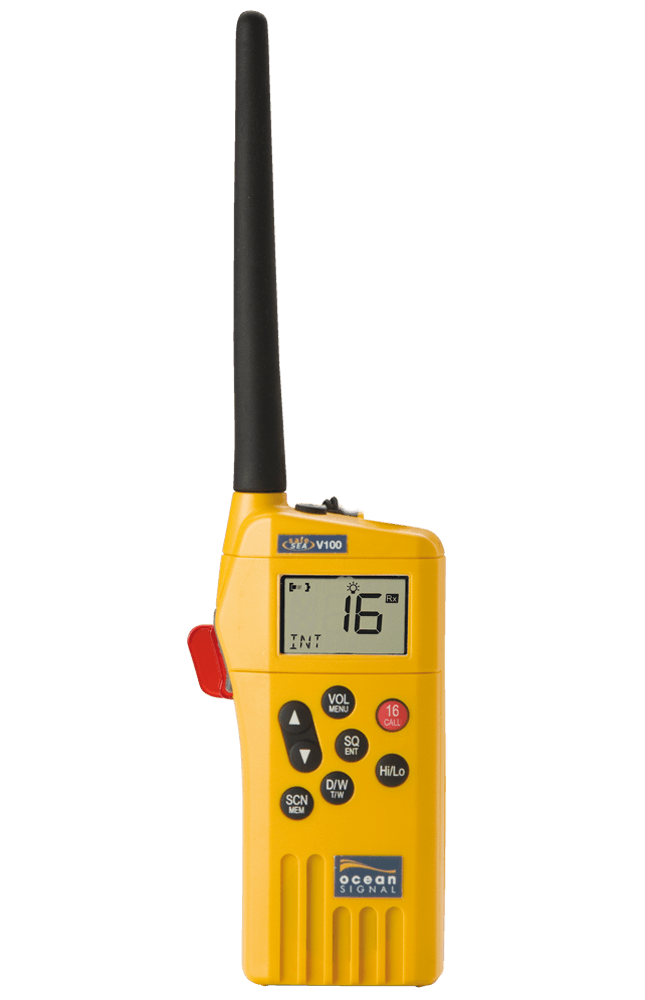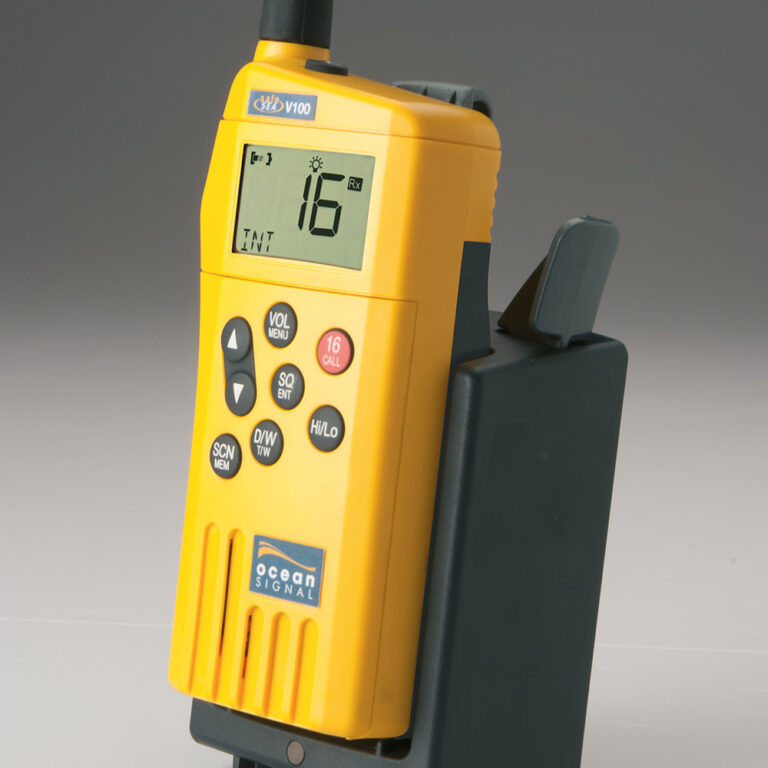For routine testing of the V100 an alkaline, non-rechargeable, battery (TB6V) is available. This battery has limited life for testing only and not suitable for operational use. Additionally, the novel battery protection tab means the primary battery can be permanently attached to the radio without fear of losing its charge. The radio will always be available for use in times of emergency without the need to remove protective labels or the like before use. Simply break off the red protective tab and the radio will be immediately ready to turn on.
Features:
- Lithium Polymer rechargeable battery option available with rapid charger, for everyday normal use
- Fully waterproof, even 40C thermal shock
- High efficiency transmitter for maximum battery life
- Rugged design exceeds GMDSS VHF Radio environmental requirements
- Lithium primary battery for emergency use
- Novel battery protection tab protects from inadvertent use
- Battery classified as non-hazardous for shipment
- Battery provides in excess of 16 hours typical operation, even at -20°C. (10% Tx, 10% Rx, 80% Squelched)
- Laser etched key legends for durability
- High contrast, backlit LCD and keypad
- Rugged accessory socket option; waterproof to IP68 for use with headsets, helmets, fist mikes, etc.
- 4 scanning modes, D/W, T/W, scan and memory scan
- 21 simplex channels according to IMO SOLAs requirements
The safeSEA V100 GMDSS VHF Radio meets the stringent requirements set by the Global Maritime Distress and Safety System (GMDSS), International Maritime Organization (IMO), and Safety of Life at Sea (SOLAS) conventions. Compliant with international standards, it ensures your vessel’s regulatory adherence and readiness for maritime operations.
Vessels subject to Global Maritime Distress and Safety System (GMDSS) regulations are typically required to have a GMDSS VHF Radio.
These include:
- Passenger ships, including ferries and cruise liners.
- Cargo ships of 300 gross tonnage and upwards.
- Tankers, including oil, chemical, and liquefied gas carriers.
- High-speed craft (HSC) of 500 gross tonnage and upwards.
- Offshore installations and mobile offshore drilling units (MODUs).
- Certain government vessels engaged in international voyages.
Additionally, specific regulations may apply depending on the vessel’s flag state, area of operation, and voyage duration. It’s essential to consult relevant maritime authorities and adhere to applicable regulations to ensure compliance.
Need to upgrade to a new AIS EPIRB to be GMDSS Compliant? Check out the new safeSEA EPIRB3 Pro
Important: Please read this service bulletin advising of a free battery exchange offer on batteries with expiry date not exceeding September 2023.
Ce bulletin est également disponible en langue française
